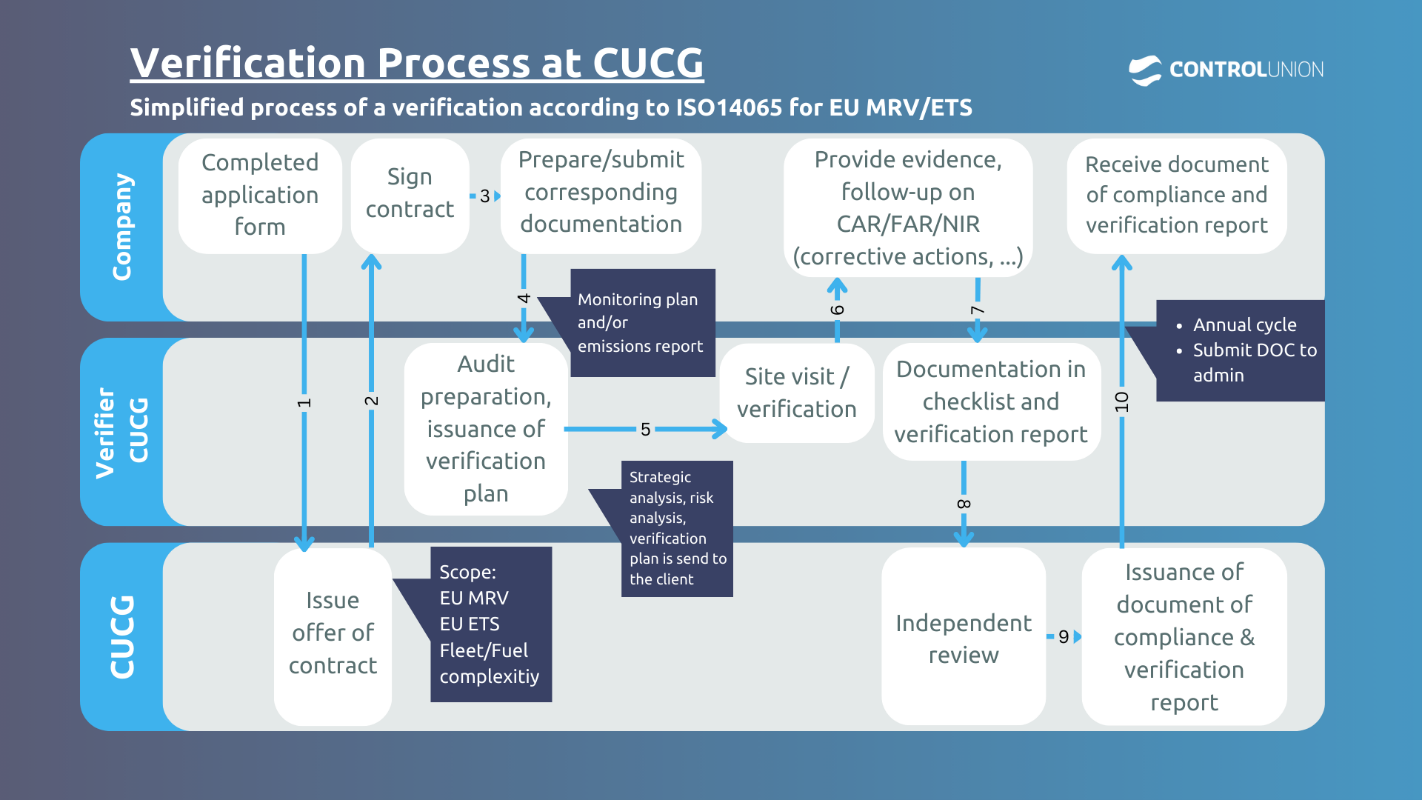Climate change is one of the most pressing issues society faces today. In order to limit the temperature rise to 2 degrees, global greenhouse gas (GHG) emissions must be reduced.
The European Union implements mandatory GHG regulations to reduce GHG emissions from maritime transport: EU MRV and EU ETS. Control Union can support your organisation in meeting the EU requirements as your ISO 14065 accredited verification body.
Regulation (EU) 2015/757 as amended by Regulation (EU) 2023/957 is the base regulation for Monitoring, Reporting and Verifying ship’s emissions:
Commercial cargo and passenger vessels from 5000 GT or above need to report their CO2 emissions from January 2018 onwards. As of January 2024, emissions of methane and nitrous oxide are included. General cargo ships and offshore vessels from 400 GT until 5000 are included in the EU MRV regulation from January 2025 onwards. Companies monitor emissions through at least 2 out of 4 means:
The European Maritime Safety Agency (EMSA) hosts the Thetis website as main portal to connect the shipping companies, verifiers and administrations. Companies should submit their GHG data through Thetis to their respective Administration.
Directive 2003/87/EC of the European Parliament and of the Council of 13 October 2003 established a system for greenhouse gas emission allowance trading within the EU (EU ETS). As of January 2025, commercial cargo and passenger ships of 5000 GT and above are included in the EU ETS and need to surrender a number of EU Allowances (EUA’s) equivalent to their CO2 emissions in metric tons within the scope of EU ETS.
Companies must prepare an emissions report on company level aggregating the emissions of their fleet. EUA’s are publicly traded and companies need to create Maritime Operator Holding Account (MOHA) to be able to buy, trade and surrender EUA’s. CUC Germany verifies whether the vessel falls within the scope and the company calculated the emissions and amount of EUA’s correctly for the reporting period.
Under ISO 14065, we deliver verification engagements in the following steps:
